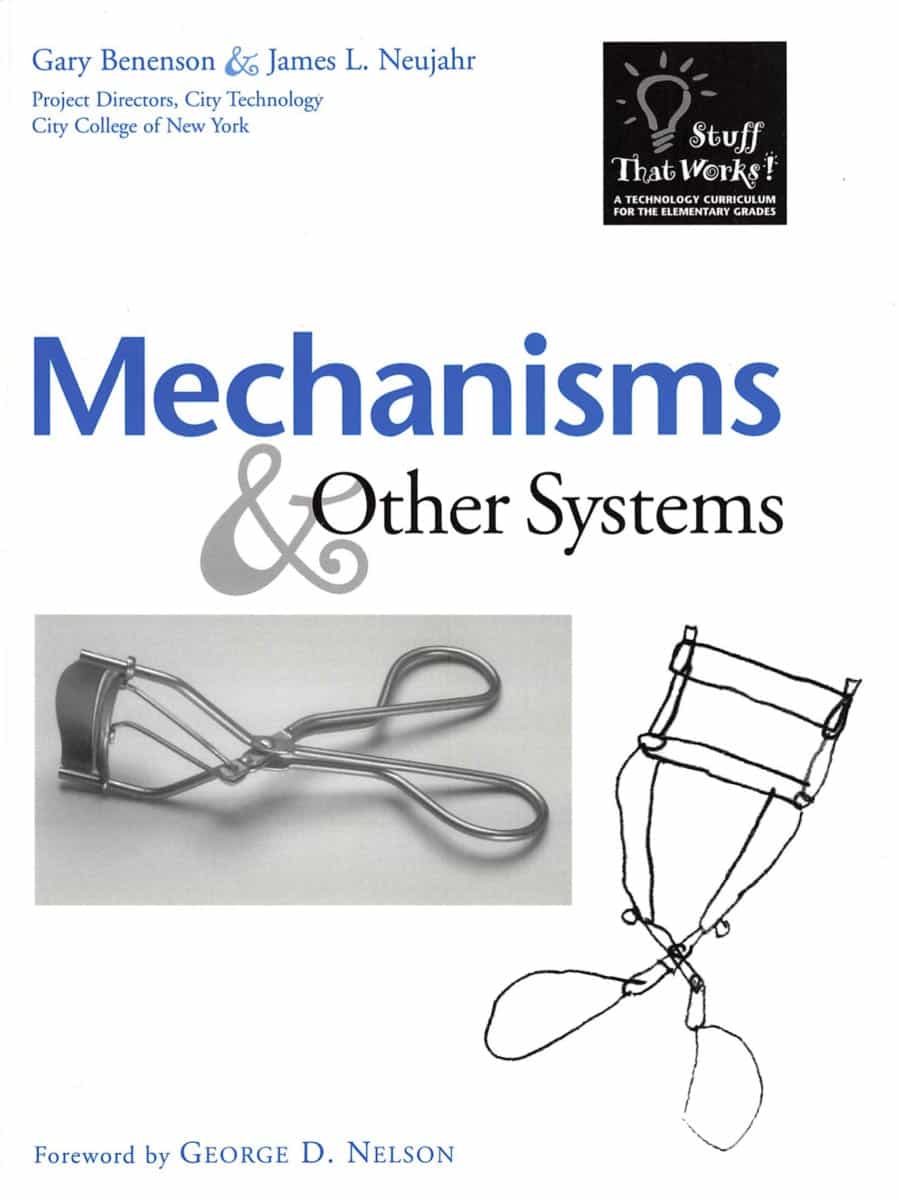Stuff that works:
Books
Mechanisms & Other Systems

About this book
Analysis of simple mechanisms such as nail clippers and umbrellas; developing systems concepts; exploring circuits and controls.
Summary of Key Concepts in Mechanisms & Other Systems
This book introduces educators to the mechanisms that surround us and are even inside us! You can find mechanisms in your kitchen, bathroom, desk drawer, classroom and almost everywhere else.
A mechanism is any device that includes moving parts. Examples are tweezers, eyelash curlers, scissors, salad tongs, nutcrackers, folding chairs, faucets and light switches. Our bodies contain numerous mechanisms too - elbows, knees and fingers, to name a few.
Mechanisms are worth studying not only because they are so familiar, but also because they are simple examples of systems, which are key concepts in science and engineering. The first system a student encounters is typically very complex: an ecosystem or circulatory system. These are very hard to comprehend, even for experts.
A much more accessible route to the system concept is through a simple system such as a nail clipper. This book also introduces simple circuits as examples of systems. The book begins with richly illustrated descriptions of commonly found mechanisms. It provides basic instructions for modeling one of them, which is the easiest way to gain insight into how a system works.
Chapter 2 provides some of the science background in very simple language. It develops the concept of a lever, mechanical advantage, 1st 2nd and 3rd class levers and compound levers, again with numerous examples. It also offers a very basic introduction to electric circuits, including how to make them, represent them on paper, and understand them.
Chapters 3 & 4 are written by elementary school teachers, including Science Clusters, Special Education and general education classroom teachers in grades K to 6. Chapter 3, “Activities”, provides classroom-tested lesson plans and worksheets for classifying, exploring and modeling mechanisms, plus making and testing electric circuits.
In Chapter 4, “Stories”, you will find accounts by teachers of how these activities took place in their classrooms. It includes descriptions of how the activity was introduced and motivated, students’ dialogue and reflections, samples of their writing and drawing, and the teacher’s reflections on what he or she learned. Much of the focus of this chapter is on how Special Education students far exceeded expectations, and developed critical thinking and literacy skills through these activities.
The last two chapters provide a broader context for engaging with mechanisms and circuits in the elementary classroom. “Resources” provides references and capsule reviews of children’s literature related to mechanisms and circuits. It also provides a brief introduction to assessment methods.
The final chapter provides an overview of education standards, and alignments with the standards that were in effect in 2002, including the NCTE/IRA Standards for the English Language, AAAS Benchmarks for Science Literacy, NRC National Science Education Standards, and NCTM Principles and Standards for School Mathematics. While these particular standards documents have all been superseded, most of the discussion of standards is still relevant.
